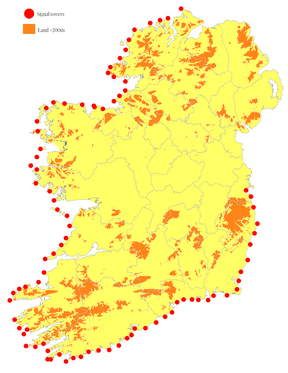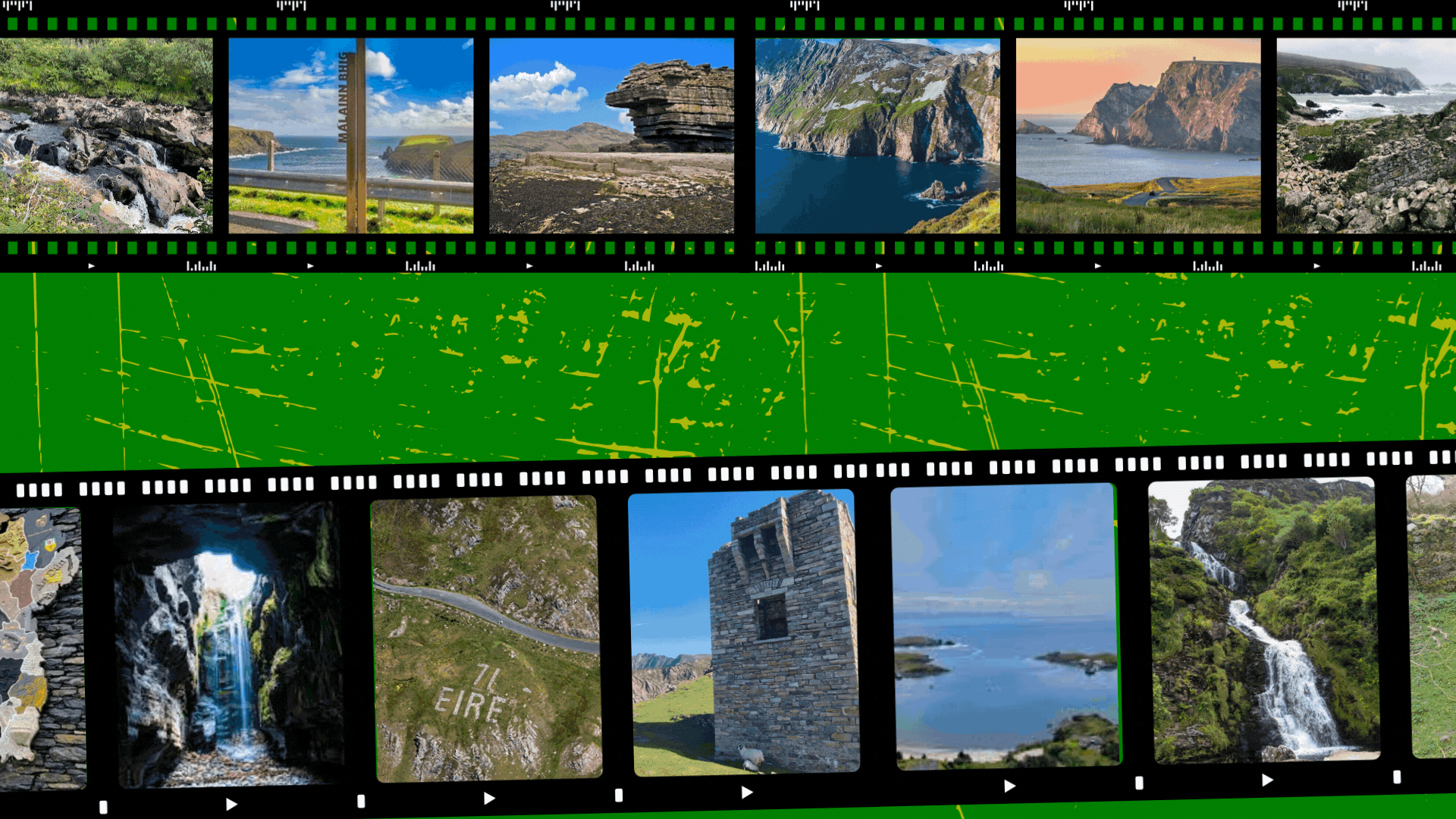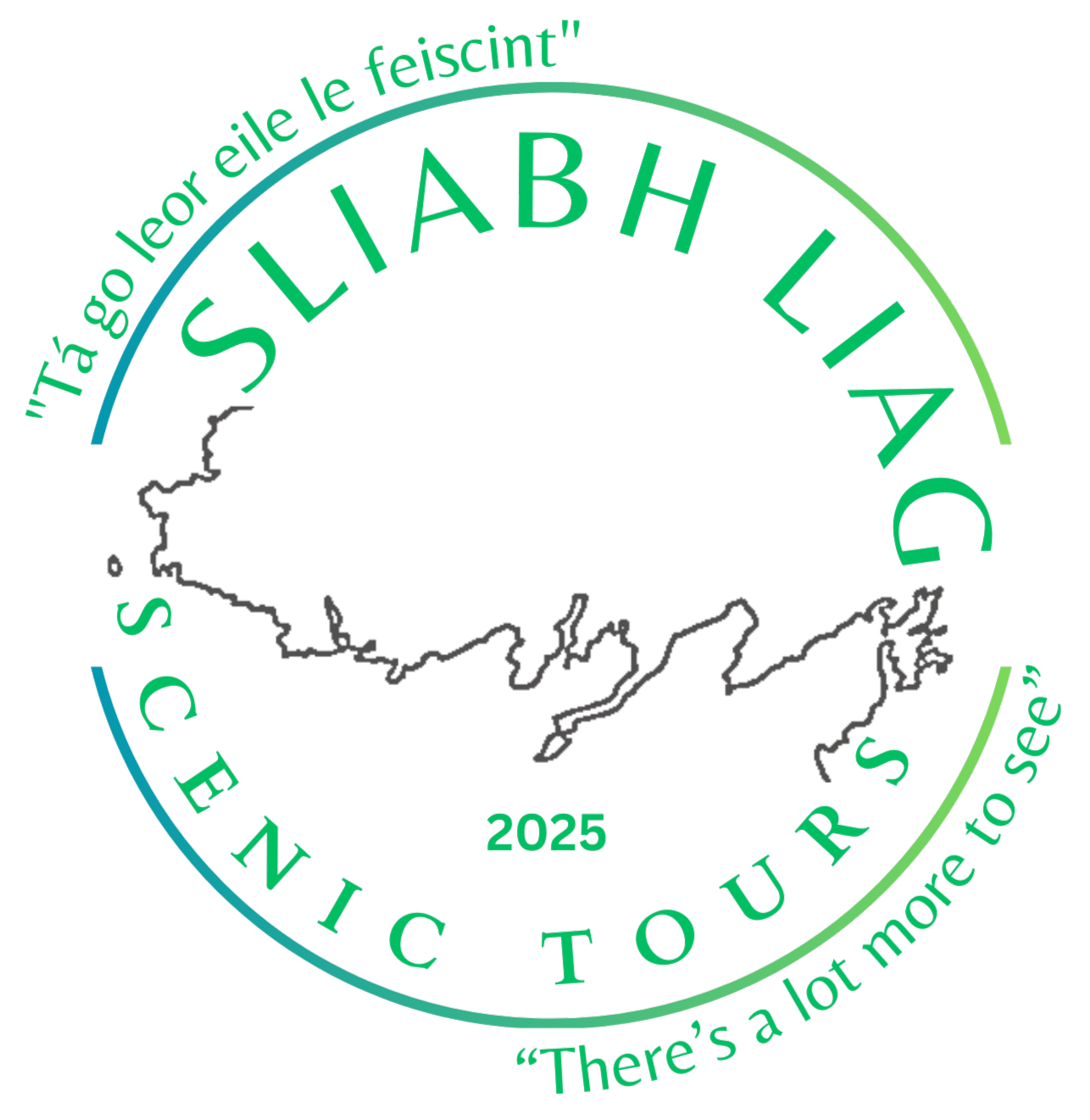
Carrigan Head watchtower on Sliabh Liag
Ireland’s Napoleonic-era signal towers were central players in an early-19th-century communication system implemented in response to the threat of a French invasion. Sited in remote coastal locations, most of these lone, grey signal towers were constructed, furnished and staffed between 1804 and 1806.
The towers were a defensible quarters for the signal crew, which normally comprised a naval lieutenant, a midshipman, two signalmen and a military guard (usually eight to 12 men). They were of broadly similar construction: square, two storeys, flat roof with parapet, main door at first-floor level (accessed by a ladder) and fireplaces. Unlike their burly bigger brothers the Martellos, the signal towers were not designed to hold heavy artillery.
The signalling system, referred to as an optical telegraph, required that each signal station be visible to its counterparts on either side. Sending a message involved raising and lowering a large rectangular flag, a smaller blue pendant and four black balls in various combinations along a system centred on a tall wooden mast. The stations also communicated with ships.
If all of 81 stations proposed in the 1804-6 plans were operating simultaneously (some accounts suggest this was never the case), a signal could travel 1,076km around the coast of Ireland. Its average journey between stations was 13.5 km. The shortest trip was between Brow Head and Mizen Head, at 3.8km; the longest was between Ballydavid and Kerry Head, at 36.9km. Low cloud and sea fog, phenomena all too familiar on the Irish coast, were very real threats to the effectiveness of the system.
The threat of invasion was significantly diminished following Napoleon’s defeat at Waterloo in 1815. Maintenance of the structures was costly, and many were abandoned. Some towers have been restored and become part of modern residences.
Many of the original stations are on the Ordnance Survey’s first-edition maps, compiled about 30 years after they were built. These note a large number as being in ruins; some have completely disappeared.
NICK HOGAN, University College Cork (The Irish Times - Saturday, February 2, 2013)
Paul M Kerrigan’s Castles and Fortifications in Ireland 1485-1945 (Collins Press, 1995) is full of detail about signal towers and the defence of the Irish coast.

The signal towers of Eire









